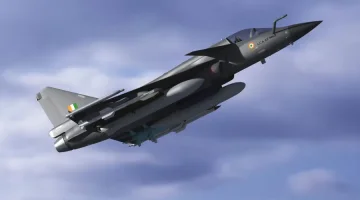- Views: 3K
- Replies: 33

Lockheed Martin's F-21 fighter jet has emerged as a strong contender in India's competition to acquire 114 Medium Role Fighter Aircraft (MRFA). Aggressively marketed as a cutting-edge, near-5th-generation platform, the F-21 is positioned as a transformative addition for the Indian Air Force (IAF). However, closer inspection reveals a more nuanced assessment is required to separate marketing claims from real-world capabilities.
Key Selling Points and Their Scrutiny
The F-21 is promoted as a significant upgrade over the F-16 Block 52, incorporating features and technologies from the F-22 and F-35. Lockheed Martin highlights the jet's advanced APG-83 Active Electronically Scanned Array (AESA) radar, claiming exceptional detection ranges and targeting ability. Yet, it remains unclear if India would be provided with the radar's source code, which is critical for integration with Indian weapon systems.Additionally, the inclusion of Triple Missile Launcher Adapters (TMLAs) boosts the number of air-to-air weapons the F-21 can carry. While this may provide a tactical edge, many analysts question the cost this additional drag may have on the aircraft's overall combat effectiveness.
Legacy Systems, Future Aspirations
Despite Lockheed Martin's claims, critics emphasize the F-21's reliance on a 50-year-old airframe and engine design. These core elements are unlikely to match the performance demanded by next-generation combat scenarios.Moreover, concerns persist about the alignment of the F-21 with India's goals of indigenous defense manufacturing. Despite 'Make in India' provisions included in the MRFA proposal, the extent of technology transfer and long-term benefits to India's defense industries remain uncertain.
Comparison with 5th Generation Fighters
Lockheed Martin's presentation of the F-21 as a near-5th-generation fighter invites comparisons with the F-22 and F-35. While there are common elements in supply chains, the key advantages of true stealth capabilities and supercruise offered by the F-22 are absent from the F-21.Furthermore, direct access to the F-35 seems unlikely, making the promise of interoperability between the platforms a distant possibility.
Conclusion
The Lockheed Martin F-21 offers some potential advantages for the IAF's modernization program. However, it is essential that India conduct a thorough evaluation of the aircraft's capabilities – both advertised and implied – to ensure it aligns fully with the nation's strategic defense requirements.A clear-eyed assessment of the F-21's strengths, limitations, and long-term implications is crucial before finalizing such a significant acquisition.

